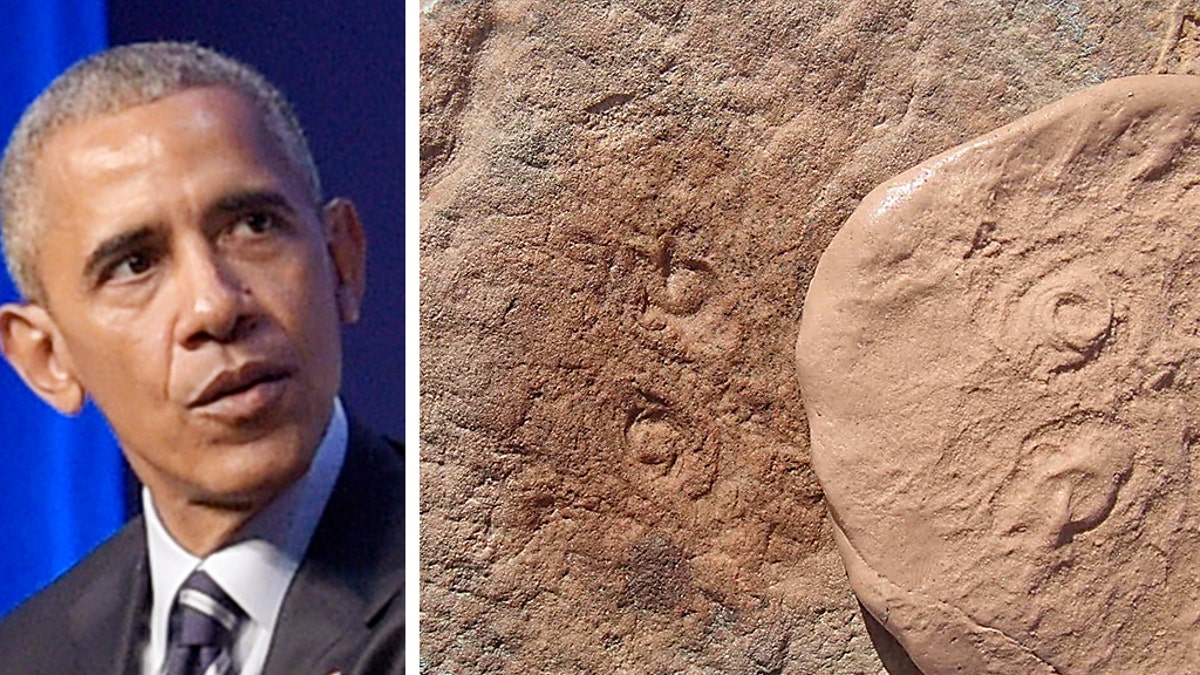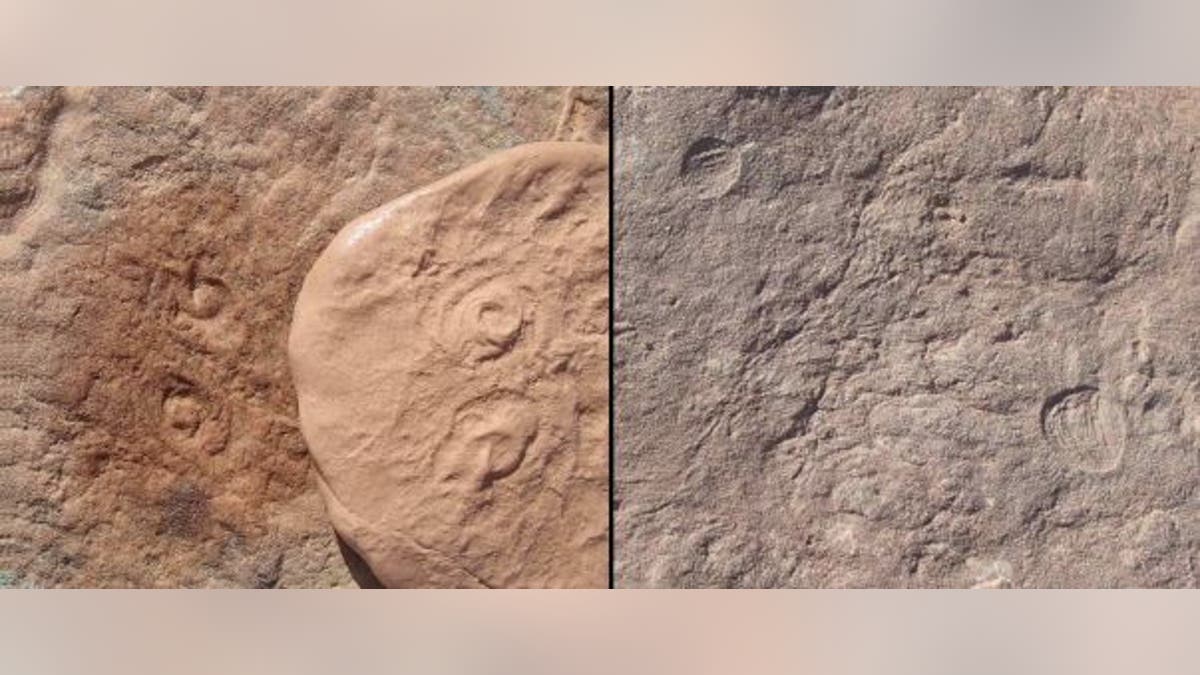
An ocean creature found in Australia by researchers has been named after former President Barack Obama. (AP/UCR Today)
A newly discovered sea creature that lived on the ocean floor 500 million years ago just received a name fit for a president — literally.
Researchers with the University of California, Riverside, (UCR) and James Gehling, a senior research scientist at the South Australian Museum, who found the ancient fossil along a mountain range in Australia, named the disc-shaped animal "Obamus coronatus," after former President Barack Obama.
Obama's "passion for science" served as inspiration behind the scientific name, UCR explained in an online statement Monday.
500-MILLION-YEAR-OLD CLAW MONSTER WAS A KILLING MACHINE
The animal is tiny — about 0.5 to 2 centimeters across — with raised spiral grooves on its back. The creature lived on the ground of shallow oceans, along with a pile of other organisms, likely never changing locations.
“Obamus coronatus did not seem to move around, rather it was embedded to the ocean mat," the researchers said.
The imprint of the animal was spotted in the sandstone of a "particularly well-preserved fossil bed" in South Australia's Flinders Ranges alongside "Attenborites janeae," a new species that now has ties to another famous figure: Sir David Attenborough, an English naturalist and broadcaster.

Obamus coronatus (left) and Attenborites janeae (right) were discovered in a mountain range in Australia. (UCR Today)
The egg-shaped animal named after the wildlife advocate is "less than a centimeter across, was adorned with internal grooves and ridges giving it a raisin-like appearance," UCR added.
MYSTERIOUS WOLF-LIKE CREATURE KILLED IN MONTANA ID'D THROUGH DNA TEST
Researchers estimate both animals lived about 580 to 540 million years ago.
UCR professor of paleontology Mary Droser, who led several studies about both creatures, said researchers were lucky to make such an incredible find.
“I’ve been working in this region for 30 years, and I’ve never seen such a beautifully preserved bed with so many high quality and rare specimens, including Obamus and Attenborites,” she said. “The two genera that we identified are a new body plan, unlike anything else that has been described."
The researchers recently published two papers detailing their findings in the Australian Journal of Earth Sciences.
